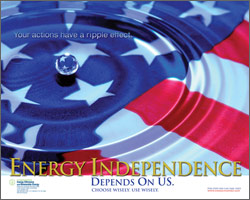GLRPPR is pleased to announce that RSS feeds are now available for all of the GLRPPR Sector Resources. This means that you can now subscribe to the sector and subject categories that interest you and receive updates in your news aggregator (e.g. Google Reader, Bloglines, etc.) when something new is added to those categories. Many of you already use the GLRPPR News RSS feed, but if you’re new to the concept and need more explanation, check out P2RIC’s RSS Frequently Asked Questions page. The Sector Resource RSS feeds will allow you to keep up with the latest information added to the GLRPPR web site related to your subjects of interest –without having to visit the GLRPPR site, search through the Sector Resources and try to figure out what has been added since you last checked. The “new additions” you’ll be monitoring will include resources, upcoming events, funding opportunities and archived Help Desk questions and answers related to a sector or subject.
To subscribe to Sector Resource RSS feeds, visit the Sector Resources section of the GLRPPR site. Browse through the list of categories, and click on those of interest to you. Within each Sector Resource, you’ll see a small orange box (like this: ![]() ) next to the title of the Sector Resource. If you want to subscribe to the RSS feed for that Sector Resource, just click on that orange icon. If you’re using Internet Explorer as your web browser, you’ll see a page showing the code for the RSS feed. Use the URL for that page to subscribe to the feed with your news aggregator of choice. If you’re using FireFox as your web browser, you’ll go to a page that allows you to select the news aggregator you want to subscribe with. Once that choice is made, click on the “subscribe now” button and then follow the regular procedure for adding a new feed to your aggregator. For an example, see the Mercury Sector Resource and look for the orange icon at the top of the page, next to the title. The updates you’ll get in your news aggregator will include the title of the new item and an indication of what the item is (e.g. “Resource,” “Training,” “Funding Opportunity,” etc.), as well as the description of that item as it appears on the GLRPPR web site. Click on the link to the item to go to that item.
) next to the title of the Sector Resource. If you want to subscribe to the RSS feed for that Sector Resource, just click on that orange icon. If you’re using Internet Explorer as your web browser, you’ll see a page showing the code for the RSS feed. Use the URL for that page to subscribe to the feed with your news aggregator of choice. If you’re using FireFox as your web browser, you’ll go to a page that allows you to select the news aggregator you want to subscribe with. Once that choice is made, click on the “subscribe now” button and then follow the regular procedure for adding a new feed to your aggregator. For an example, see the Mercury Sector Resource and look for the orange icon at the top of the page, next to the title. The updates you’ll get in your news aggregator will include the title of the new item and an indication of what the item is (e.g. “Resource,” “Training,” “Funding Opportunity,” etc.), as well as the description of that item as it appears on the GLRPPR web site. Click on the link to the item to go to that item.
This is a new service, so we anticipate that there may be bugs to work out in the beginning; if you want to report a technical problem related to the new feeds, email Tyler Rubach, GLRPPR Webmaster. 


 In honor of
In honor of